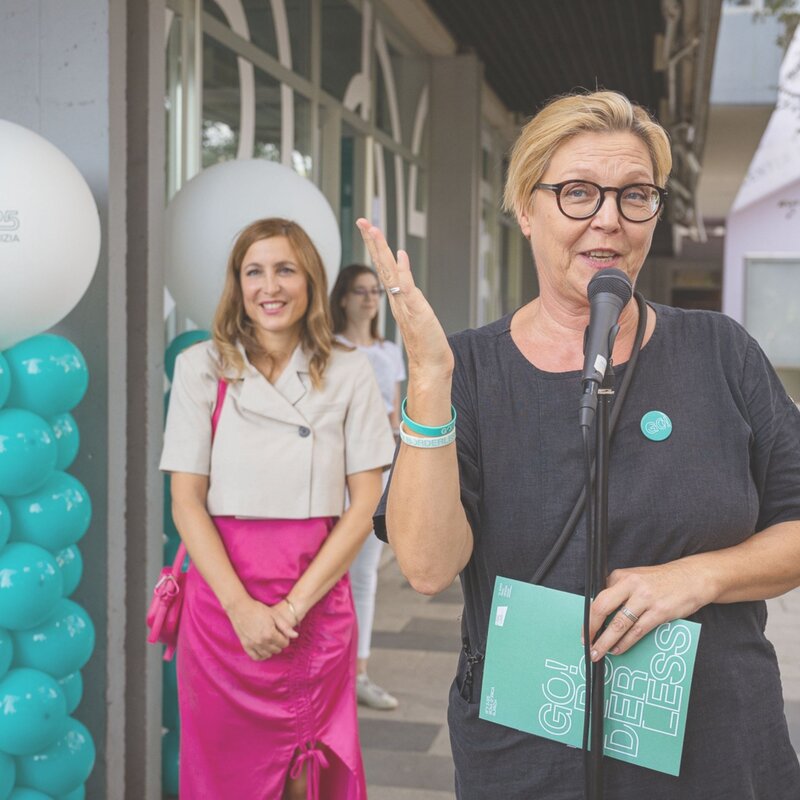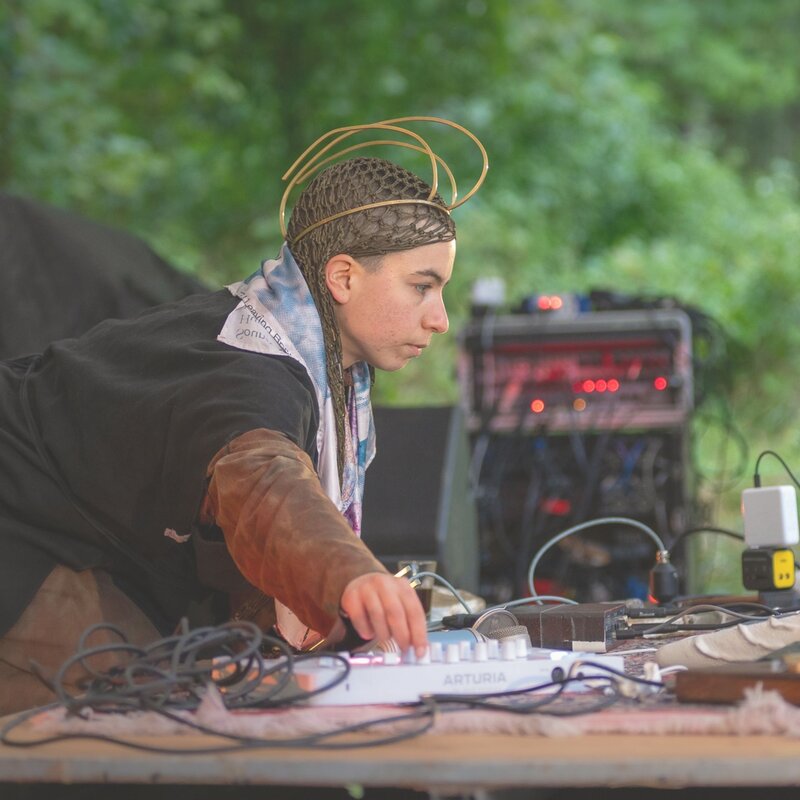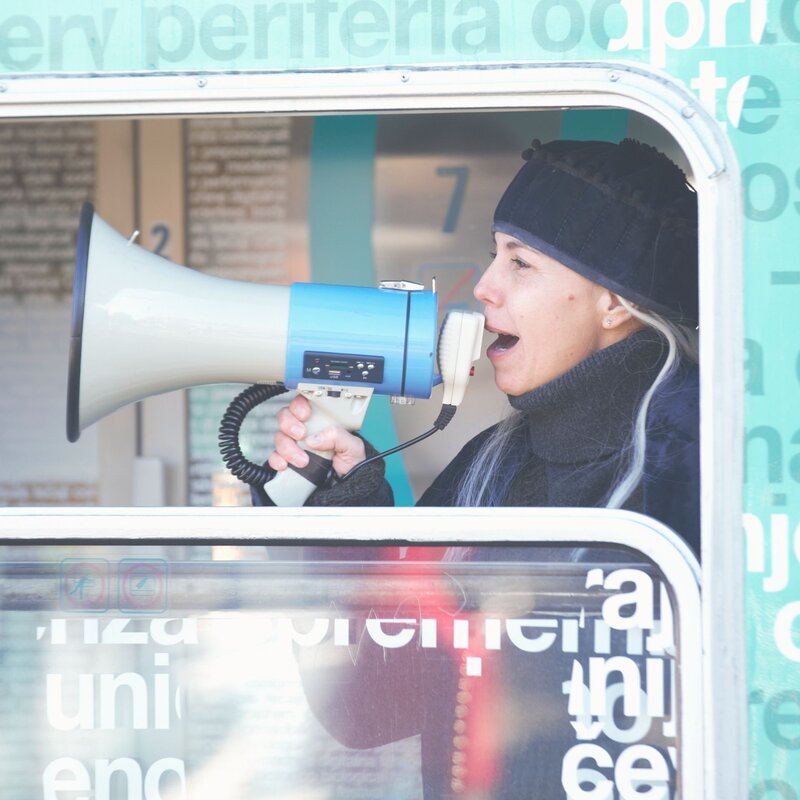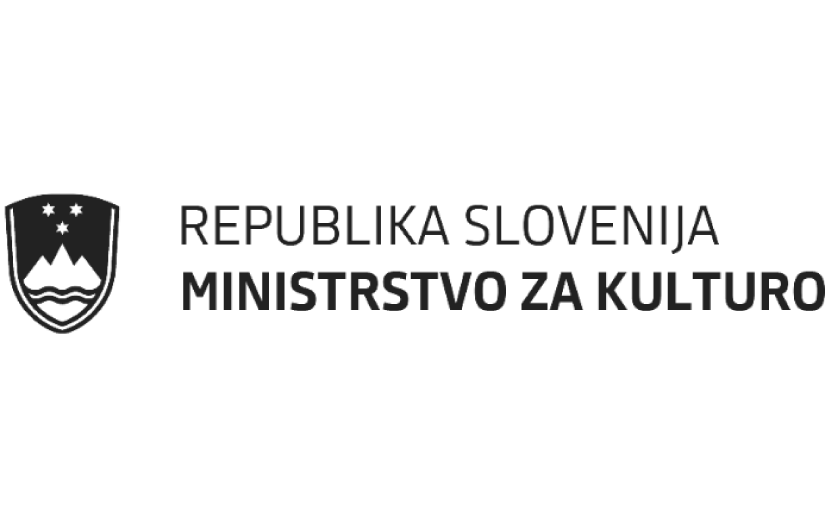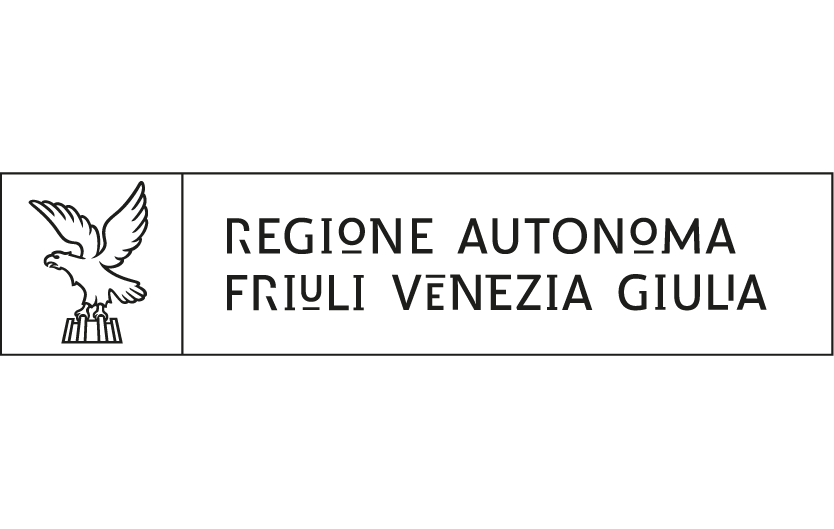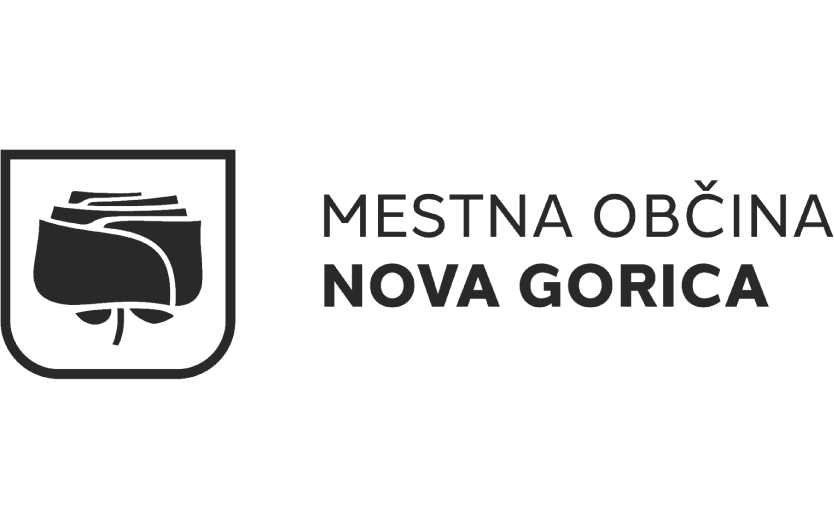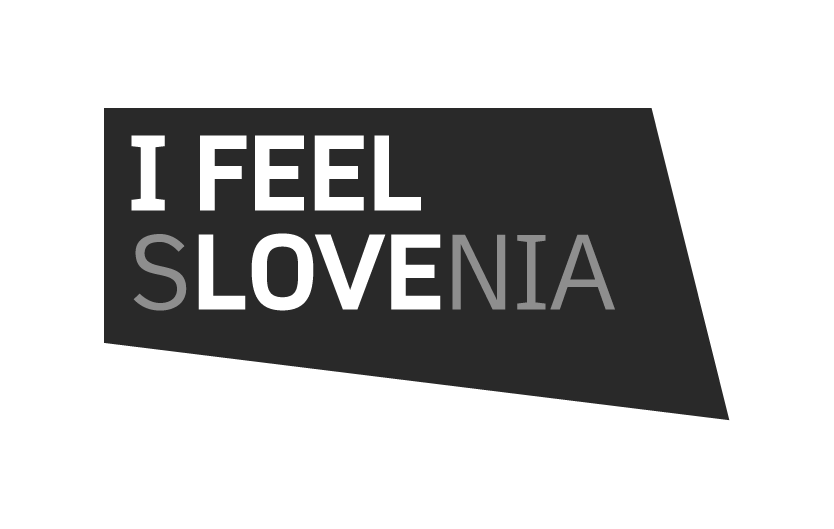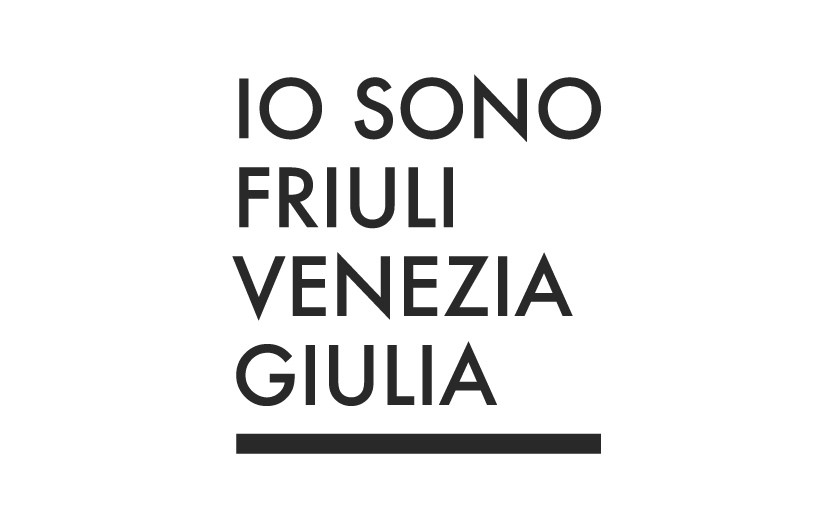26. 11. 2025

Enajst držav – Belgija, Francija, Slovenija, Italija, Madžarska, Poljska, Slovaška, Nemčija, Avstrija, Romunija in Ukrajina; številne institucije – muzeji, občine, dediščinske agencije, turistične organizacije, regionalni razvojni centri in znanstvene ustanove, a ena skupna ideja – varovanje, interpretacija, raziskovanje in revitalizacija dediščine prve svetovne vojne s pristno transnacionalnim pristopom.
Pod vodstvom Posoškega razvojnega centra in Fundacije Poti miru ta raznolika mreža združuje partnerje pri raziskovanju, kako lahko pokrajine nekdanjih frontnih črt postanejo prostori dialoga, izobraževanja in trajnostnega razvoja.
Delo poteka v okviru projekta GOV4PeaCE – projekt večdimenzionalnega in čezteritorialnega modela upravljanja za aktivacijo dediščine prve svetovne vojne, s katerim se spodbuja trajnostni družbeno-gospodarski razvoj v obrobnih regijah Srednje Evrope. Projekt sofinancira Evropska unija v okviru programa Interreg Central Europe.
Zakaj je skupna pripoved pomembna? Kako je mogoče povezati različne nacionalne tradicije spominjanja? Kakšno vlogo lahko imajo muzeji, raziskovalci in lokalne skupnosti pri oblikovanju skupnega evropskega spomina na vojno? Na ta vprašanja odgovarja intervju s predstavniki ključnih institucij, ki so dejavno vključene v oblikovanje novega, čezmejnega pogleda na zapuščino velike vojne.
To je zgodba o tem, kako lahko nekoč razdeljena zgodovina postane temelj za skupno evropsko prihodnost.
Klavdija Figelj (Evropska prestolnica kulture Nova Gorica–Gorica 2025) v pogovoru z Francescom Frizzero (Museo Storico Italiano della Guerra), Mašo Klavora (Fundacija Pot miru), Stephenom Lodewyckom (In Flanders Fields Museum, Ypres), Kamilom Ruszało (Univerza Jagiellonska) in Petro Svoljšak (ZRC SAZU – Slovenska akademija znanosti in umetnosti).
Naslednji intervju združuje predstavnike vodilnih evropskih institucij, vključenih v projekt GOV4PeaCE, da bi razpravljali o tem, kako lahko dediščina prve svetovne vojne služi kot temelj za transnacionalno sodelovanje in trajnostni razvoj. Pod naslovom »Transnacionalna dediščina vojne: prenos znanja in trajnostni razvoj onkraj meja« pogovor raziskuje, kako partnerji iz različnih držav sodelujejo pri ponovni interpretaciji in ohranjanju zapuščine vojne s pomočjo skupnih raziskav, izobraževanja in muzejskih praks.
S povezovanjem akademskega znanja z lokalnim in mednarodnim upravljanjem kulturne dediščine si dialog prizadeva poudariti, kako lahko kolektivni spomin spodbuja mir, odpornost in kulturno izmenjavo prek meja – ter tako ostanke konflikta preobrazi v živ prostor sodelovanja in učenja za prihodnje generacije.
Transnacionalna dimenzija
Dediščina prve svetovne vojne sega daleč preko nacionalnih meja. Njeno ohranjanje in interpretacija zahtevata skupen napor, dialog in medsebojno razumevanje med državami, ki jih je nekoč razdvajal konflikt. Zakaj je mednarodno sodelovanje med Slovenijo, Poljsko, Slovaško, Italijo, Belgijo, Francijo, Madžarsko, Romunijo, Nemčijo, Avstrijo in Ukrajino in drugih tako ključno pri projektu, ki se ukvarja z dediščino prve svetovne vojne?
Maša Klavora (Fundacija Pot miru): Ker je bila prva svetovna vojna globalni konflikt, je vplivala na ljudi in pokrajine povsod, ne glede na to, na kateri strani so bili – in njene sledi še danes oblikujejo skupnosti in okolja. Dediščina prve svetovne vojne je nastala ob prispevku različnih narodov, ljudstev in kultur ter ohranja spomin na številne skupine žrtev. Zato predstavlja skupno dediščino in zgodovino mnogih od nas, ne glede na njeno lokacijo. Ustvarja kolektivni spomin, ne zgolj individualnega ali družinskega. Danes ima dediščina prve svetovne vojne izjemno univerzalno vrednost in izrazito transnacionalen pomen ter nosi pomembno odgovornost.
Da bi resnično razumeli njene številne zgodbe – ter čustva in interpretacije današnjih generacij – morajo to zgodovino raziskovati strokovnjaki iz različnih držav in z različnimi perspektivami. Le čezmejno in transnacionalno sodelovanje omogoča pristno izmenjavo znanja, idej in dobrih praks, spodbuja skupne projekte ter nam omogoča, da se srečamo, se učimo drug od drugega in se soočimo z našo skupno, pa tudi različno preteklostjo. Takšno sodelovanje je samo po sebi pot k miru in spravi. Transnacionalni pristop k dediščini in zgodovini, namesto zgolj nacionalnega okvira, močno poveča njun pomen za sodobno družbo. Evropa – in svet – danes takšne refleksije, izkušnje in prakse potrebujeta bolj kot kdaj koli prej.
Stephen Lodewyck (In Flanders Fields Museum): Čeprav so bile nacionalne meje tik pred začetkom prve svetovne vojne še pomembne, je njihov pomen zaradi vojne bistveno izginil. Geografske značilnosti v pokrajini pa so postale še toliko bolj pomembne. Raznolika dediščina prve svetovne vojne se večinoma nahaja v na območjih, ki prečkajo državne meje.
Vendar pa ohranjanje in predstavitev sledita regionalnim oziroma nacionalnim standardom, predpisom in perspektivam. Ker pa je bil konflikt v svojih vzrokih, izkušnjah in dolgoročnih posledicah temeljno transnacionalen, nobena posamezna država ne poseduje celotne pripovedi, in ker se zgodovinska pokrajina vojne razteza po vsej Evropi, njeno razumevanje zahteva združevanje znanja in perspektiv iz različnih regij. Različne pravne ureditve za zaščito je mogoče oceniti v skupnem prizadevanju, iz katerega se lahko učimo drug od drugega in na koncu uskladimo standarde.
Ta potreba po sodelovanju odraža tudi širši historiografski premik. Prva svetovna vojna se vse bolj obravnava ne kot vrsta izoliranih nacionalnih zgodb, temveč kot skupna evropska izkušnja. Krepitev te perspektive zahteva stabilno mrežo mednarodnih partnerjev, ki lahko izmenjujejo strokovno znanje in raziskave ter tako skupaj oblikujejo bolj celovito interpretacijo zgodovine vojne. Močno sodelovanje med temi partnerji, skozi poglobljen dialog o interpretaciji zgodovine in dediščine, si prizadeva vzpostaviti skupni okvir vrednot glede izgub, ki jih je povzročila vojna, in pomena (prizadevanja za) miru.
Kamil Ruszała (Univerza Jagiellonska): Vzhodna fronta je prečkala več današnjih državnih meja, ustvarila pokrajino skupne zgodovine, ki je ni mogoče razumeti skozi eno samo nacionalno prizmo. Sodelovanje različnih držav v regiji nam omogoča povezovanje fragmentiranih arhivov, pokopališč in spominskih kultur v eno koherentno pripoved. Vsaka država ohranja le del vojne izkušnje, ki je zanje edinstven, vendar lahko polni obseg posledic vojne rekonstruiramo le s skupnim delom: od preseljevanja, nasilja, uničenja in obnove, pa tudi nove kulturne in materialne pokrajine, ki potrebuje ustrezno definicijo. Transnacionalno sodelovanje prav tako pomaga uskladiti standarde ohranjanja in podpira lokalne institucije, ki pogosto delujejo v izolaciji. Predvsem pa krepi idejo, da dediščina prve svetovne vojne pripada celotni Evropi, ne posameznim nacionalnim kanonom.
Petra Svoljšak (ZRC SAZU, Inštitut za zgodovino Milka Kosa): Prva svetovna vojna je bil prvi veliki konflikt z množičnim značajem v mnogih pogledih: množična mobilizacija, množična smrt, množično begunstvo, množično uničenje. Po več kot sto letih nas ostanki, dediščina in zapuščina te vojne opominjajo na potrebo, da se učimo iz napak preteklosti za ohranjanje miru; številni današnji konflikti so namreč zapuščina prve svetovne vojne, geopolitičnih odločitev in praks upravljanja človeških virov, ki izhajajo iz prve svetovne vojne.
Zavezanost civilne družbe, znanosti in muzejev k transnacionalnemu delu na področju dediščine prve svetovne vojne je pomemben korak k medsebojnemu razumevanju, skupnemu znanju in premagovanju predsodkov, ki pogosto vodijo v konflikte in nesporazume. Pomembno je tudi povezati različne dele Evrope, ki so med vojno doživeli zelo različne izkušnje, imeli različne politike spominjanja in prakse obeleževanja po vojni.
Prepletanje nacionalnih tradicij spominjanja v transnacionalno razumevanje
Vsaka država se na prvo svetovno vojno spominja skozi svoje kulturne in zgodovinske prizme. Največji izziv – hkrati pa priložnost – pa je ustvariti skupno evropsko pripoved, ki vključuje raznolikost, hkrati pa spodbuja dialog. Katere so glavne težave pri povezovanju različnih nacionalnih tradicij spominjanja znotraj istega projektnega okvira?
Petra Svoljšak (ZRC SAZU): Glavni izziv je pridobivanje znanja in preseganje pogosto zahodnoevropsko usmerjene pripovedi o prvi svetovni vojni. Transnacionalno sodelovanje je zato ključno za premagovanje razlik in spodbujanje skupne pripovedi, ob spoštovanju razlik ter priznavanju pomena čezmejnega in transnacionalnega sodelovanja na vseh področjih, povezanih z dediščino vojne. Ustvarjanje mreže institucij in posameznikov čez nekdanje fronte je najboljša in najučinkovitejša praksa pri oblikovanju panevropske pripovedi o prvi svetovni vojni, ob spoštovanju posameznih tradicij. Po drugi strani pa je pomembno dvigniti ozaveščenost o skupnem spominu in povezovalni dediščini vojne, ki pomaga premagovati nevednost, spodbujati kulturo miru in sobivanja.
Francesco Frizzera (MITAG): Največja ovira pri spodbujanju skupne evropske pripovedi je uravnavanje naravne napetosti med različnimi nacionalnimi tradicijami spominjanja in potrebo po transnacionalnem razumevanju. Vsaka država si prvo svetovno vojno razlaga skozi svojo kulturno prizmo, pogosto utrjeno z monolitno retoriko, ki so jo vzpostavile države naslednice ali zmagovalke. Te pripovedi, zasnovane za gradnjo nacionalne enotnosti, so zgodovinsko zakrivale izkušnje manjšin in „drugih“, kar je privedlo do različnih zgodovinskih perspektiv in neenakomerne ravni dediščinske infrastrukture po Evropi. To predstavlja pomemben izziv pri usklajevanju raznolikih tradicij obeleževanja in občutljivosti.
Vendar pa se ogromna priložnost skriva v izkoriščanju edinstvene narave obmejnih območij in postimperialnih prostorov. V teh kontekstih je zgodovinska izkušnja veliko bolj niansirana; posamezne zgodbe – na primer stari starši, ki so se borili na nasprotnih straneh – ustvarjajo dinamično napetost, ki se upira enostavnim, teleološkim razlagam zgodovine. V teh nekdanjih večetničnih ozemljih lahko patriotsko-nacionalno obeleževanje pogosto deluje površno ali vsiljeno. Namesto tega obstajajo globlje, bolj utemeljene oblike spominjanja, ki imajo univerzalno vrednost in presegajo delitev na zmagovalce in poražence. Te predobstoječe kulturne izmenjave in skupne zgodovine v postimperialnih okoljih naravno spodbujajo platforme za skupno sobivanje, zaradi česar so ta območja najperspektivnejša za razvijanje vključujoče, transnacionalne pripovedi, ki resnično sprejema raznolikost in spodbuja dialog.
UNESCO in evropski okvir dediščine
Evropska Pot miru si prizadeva postati del mreže poti dediščine, priznanih s strani UNESCO, s povezovanjem lokacij iz prve svetovne vojne po vsej Evropi pod skupnim sporočilom miru in sprave. Kako se ideja razvoja Evropske Poti miru povezuje s postopkom nominacije pri UNESCO?
Stephen Lodewyck (In Flanders Fields Museum): Vrednote, ki so osnova za priznanje kot svetovna dediščina UNESCO, je treba dobro razumeti, da se zagotovi, da je Evropska Pot miru/Walk of Peace čim bolj usklajena s postopkom priznanja. „Izjemna univerzalna vrednost“ pomeni kulturni in/ali naravni pomen, tako izjemen, da presega nacionalne meje in je v skupnem interesu sedanjih in prihodnjih generacij celotnega človeštva. Nadaljnje ohranjanje te dediščine je zato izredno pomembno za mednarodno skupnost kot celoto. Prepričan sem, da ima povezovanje lokacij prve svetovne vojne na fizičen, transnacionalen način, ki nosi skupno sporočilo miru, potencial, da izpolni te izjemne univerzalne vrednote, tako kot so to dosegle spominske lokacije prve svetovne vojne na zahodni fronti.
Maša Klavora (Fundacija Pot miru): Ena najmočnejših izjemnih univerzalnih vrednot – in ključni element za vsako nominacijo pri UNESCO – Poti miru/Walk of Peace ter (vsaj nekaterih delov) dediščine prve svetovne vojne je sporočilo miru. Ker je bila prva svetovna vojna globalni konflikt z mnogimi pomembnimi dediščinskimi lokacijami, ki so še vedno vidne v različnih državah in nosijo jasen transnacionalen pomen, bi Pot miru lahko postala transnacionalna serijska nominacija. Takšna nominacija bi imela močan simbolni pomen tako za preteklost kot za sedanjost: podpirala bi skupno spominjanje vseh žrtev, spodbujala spravo danes ter prispevala k trajnostnemu razvoju regij, ki jih je vojna nekoč prizadela.
Pomembno je tudi ime nominacije: Pot miru/Walk of Peace. Čeprav pripoveduje zgodbo vojne, posreduje pozitivno in v prihodnost usmerjeno sporočilo – sporočilo upanja, optimizma in skupne prihodnosti. Pomembno pa je, da ni namenjeno le zgodovinarjem, temveč vključuje širše občinstvo in različne ciljne skupine.
Kamil Ruszała (Univerza Jagiellonska): Za vzhodno fronto predstavlja vključitev v pobudo Pot miru/Walk of Peace edinstveno priložnost, da se ta pogosto spregledana regija postavi na evropski zemljevid dediščine. Nominacija pri UNESCO zahteva raziskovalno utemeljeno dokumentacijo, dolgoročne upravljavske strukture in skupno čezmejno pripoved. Na vseh teh področjih imajo univerze in raziskovalne institucije ključno vlogo.
Naš cilj je prispevati akademsko strokovno znanje za podaljšanje poti proti vzhodu, povezati lokacije na Poljskem, Slovaškem in v naslednjem koraku onkraj te regije z že priznanimi lokacijami v Sloveniji, Italiji in Belgiji. To zagotavlja okvir za prihodnje transnacionalno razumevanje preteklosti. Z vzpostavljanjem močnih partnerstev z občinami, muzeji in nevladnimi organizacijami želimo pokazati, da dediščina Vzhodne fronte nosi enako univerzalno sporočilo miru in sprave kot druge evropske pokrajine prve svetovne vojne.
Vloga znanosti in akademskih institucij
Ker je bila v pogovoru že izpostavljena vloga univerz in ideja „raziskovanja za družbo“, bomo nadaljevali z vprašanjem, kako raziskave in izobraževanje – ki sta jedro interpretacije dediščine – omogočata univerzam in akademskim institucijam, da zagotovijo dokaze, kontekst in pripovedi, ki zgodovino preoblikujejo v živo kulturo: Kakšna je vloga znanosti in akademskih institucij v projektu GOV4PeaCE in kako sodelovanje med raziskovalci, muzeji in lokalnimi oblastmi krepi rezultate projekta ter njegovo dolgoročno trajnost?
Maša Klavora (Fundacija Pot miru): Najpomembnejša tema projekta GOV4PeaCE je upravljanje – kako izboljšati upravljanje dediščine prve svetovne vojne z vključitvijo in podporo različnih sektorjev (občine, muzeji, raziskovalni centri, NVO, institucije za zaščito dediščine, regionalne razvojne agencije, izobraževanje). Za dosego tega cilja je nujno tudi kakovostno raziskovalno delo, primerjalne analize najboljših praks in različnega znanja. Pot miru/Walk of Peace mora biti razvita tako od spodaj navzgor kot od zgoraj navzdol ter na več sektorjih, dimenzijah in ravneh. Kot primer Posoški razvojni center, ZRC SAZU in PromoTurismoFVG že vrsto let podpirajo partnerje v Sloveniji in Italiji pri oblikovanju strokovnih, čezmejnih standardov za upravljanje dediščine prve svetovne vojne.
Hkrati Univerza Jagiellonska – zlasti Fakulteta za zgodovino in Raziskovalni center za kritične študije dediščine – prinaša v projekt inovativno perspektivo srednje-vzhodne Evrope, ponujajoč modele zaščite in razvoja dediščine, ki povezujejo javne institucije, muzeje, NVO, turizem in izobraževanje. Njihove raziskave frontnih pokrajin, arheologije konfliktov in rekonstrukcije izgubljenih ali pozabljenih lokacij so bile ključne za identifikacijo pokopališč in razumevanje materialnih sledi vojne. To strokovno znanje ni pomembno le za partnerje v srednje-vzhodni Evropi, temveč neposredno podpira tudi deležnike v Sloveniji in Italiji, saj jim pomaga prepoznati transnacionalni značaj dediščine prve svetovne vojne ter uvajati bolj integrirane in trajnostne modele upravljanja.
Stephen Lodewyck (In Flanders Fields Museum): Sodelovanje raziskav v muzejih in raziskav v akademskih institucijah bi moralo prinašati medsebojno obogatitev. Raziskovalci v muzejih postavljajo določene teme na akademski raziskovalni dnevni red, dopolnjujejo raziskovalne rezultate z znanjem iz prakse na terenu in konkretno sodelujejo pri prenosu akademskih raziskovalnih rezultatov v dostopne razstave in javne programe, medtem ko lokalne oblasti te ugotovitve vključujejo v načrtovanje, turistične in konservatorske strategije. Ta medsebojna obogatitev ne le izboljšuje kakovost projekta, temveč tudi krepi vključevanje skupnosti in dolgoročno trajnost. Znanje, ki ga je Muzej In Flanders Fields v preteklosti pridobil s tem sodelovanjem, se po potrebi deli s partnerji pri ustvarjanju modela upravljanja in se uporablja v dejavnostih in delovnih sklopih, za katere je muzej odgovoren.
Francesco Frizzera (MITAG): Akademske institucije so osrednje v projektu GOV4PeaCE, saj delujejo kot glavni gonilni mehanizem sprememb z omogočanjem konceptov „raziskovanje za družbo“ in „raziskovanje za razvoj“. Univerze in raziskovalni centri, kot sta ZRC SAZU in Univerza Jagiellonska, so ključni za zagotavljanje dokazov, konteksta in strokovno utemeljenih pripovedi, potrebnih za preoblikovanje zgodovinskih podatkov v živo kulturo in trajnostna orodja za upravljanje dediščine. Usmerjajo proces prenosa znanja iz akademskega področja v praktično uporabo. V študiji primera Trentina je sodelovanje med univerzo in teritorialnimi muzeji to vlogo pokazalo s tem, da je radikalno spremenilo javni diskurz.
S tem so znova postavili v ospredje „pozabljene“ teme – bojevnike v avstro-ogrskih uniformah, ženske, ujetnike in otroke – ki jih je nacionalna patriotska retorika prej marginalizirala. Z osvetljevanjem njihovih premikov, usod in skupnih izkušenj, kot je pojav beguncev in prisilnih preselitev, so raziskovalci ustvarili široko javno zavest in kolektivno željo po ponovnem odkrivanju prej skrite preteklosti. Ta spoznanja so bila nato prenesena v otipljive rezultate: razstave, digitalne platforme in skupnostna doživetja, na primer na Češkem ali Moravskem, kjer so domačini obiskali pokopališča svojih prednikov. To dokazuje, kako akademsko sodelovanje krepi rezultate projekta in zagotavlja, da je upravljanje dediščine zasnovano na natančnem, večplastnem zgodovinskem razumevanju.
Družbeni in izobraževalni vpliv
Poleg samega ohranjanja dediščine služijo projekti, kot je GOV4PeaCE, tudi kot izobraževalne platforme, ki učijo empatije, miru in zgodovinske ozaveščenosti. Zato je vredno vprašati: kakšen je akademski in družbeni pomen projekta GOV4PeaCE za prihodnje generacije, kako nam lahko pripovedi iz vojne pomagajo razmišljati o današnjih izzivih, kot so konflikti in odpornost, ter kakšno sporočilo o zapuščini prve svetovne vojne in kulturi miru želite posredovati evropskemu občinstvu?
Petra Svoljšak (ZRC SAZU): Izhodišče za razumevanje pomena dediščine prve svetovne vojne je spoznanje o dolgoročnih posledicah te vojne, ki segajo tudi do današnjih oboroženih konfliktov in vplivajo na sodobni svet. Kraji spomina in obeležja mladim generacijam posredujejo absurdnost in tragične posledice vojne na osebni, lokalni, nacionalni in globalni ravni. Pokopališča in spominske lokacije, ki so se razvila v prostore skupnega spomina, lahko poučujejo o pomenu strpnosti in sobivanja. Mlajše generacije se lahko naučijo pomena vključujoče družbe, kjer šteje vsak glas, in kjer multikonfesionalnost, multikulturnost in večjezičnost bogatijo družbo.
Vrednote, ki jih projekt GOV4PeaCE spodbuja, niso povezane zgolj s skupno politiko ohranjanja in interpretacije dediščine, temveč predvsem z vrednotami Poti miru/Walk of Peace, ki so osredotočene na ustvarjanje družbe, temelječe na strpnosti, kulturi miru in vključevanju. To je jedro povezovalne dediščine, Pri tem je Pot miru/ Walk of Peace eden najboljših primerov povezovalnosti, ki temelji na problematični in konfliktni preteklosti, hkrati pa gleda v smer povezovalne sedanjosti in prihodnosti.
Kamil Ruszała (Univerza Jagiellonska): Lokacije prve svetovne vojne na vzhodni fronti nas opominjajo, kako močno je vojna oblikovala lokalne skupnosti in celotne regije. S projektom GOV4PeaCE te izkušnje prevajamo v izobraževalna orodja, ki spodbujajo empatijo, odpornost in kritično razmišljanje. Za mlajše generacije učenje o skupni in multikulturni vojni preteklosti pomaga premagovati nacionalne stereotipe in razumeti, kako tesno so bile evropske družbe povezane. Spomeniki in pokopališča postanejo sporočila o miru in humanitarni odgovornosti: učijo ohranjanje spomina na mrtve, hkrati pa razkrivajo nesmiselnost vojne, ko se soočimo s stotinami tisočev raztresenih grobov. Dediščina torej ne služi glorifikaciji konflikta, temveč razumevanju njegovih posledic in uporabi tega znanja za gradnjo solidarnosti ter mirnejše prihodnosti.
Perspektive partnerjev in zapuščina
Po vzpostavitvi mreže in pridobitvi izkušenj s transnacionalnim sodelovanjem na področju dediščine prve svetovne vojne je projekt GOV4PeaCE razširil svoje mreže, ustvaril nova orodja in modele za čezmejno sodelovanje. Pogled naprej spodbuja partnerje k razmisleku o dosežkih in prihodnjih korakih. Z vidika vaše institucije: kateri so bili doslej najpomembnejši rezultati projekta? Kako si predstavljate nadaljevanje sodelovanja po zaključku projekta GOV4PeaCE?
Maša Klavora (Fundacija Pot miru): Doslej so najpomembnejši rezultati vzpostavitev močnih čezmejnih mrež sodelovanja: med Poljsko in Slovaško – ter celo Ukrajino –, med Madžarsko, Romunijo in Srbijo ter med Slovenijo in Italijo (v štirih regijah, ne le v Furlaniji-Julijski krajini in delih Veneta). Vključeni sta tudi Belgija in Francija. To je omogočilo izmenjavo praks in znanja ter pripravo novih skupnih projektov.
Poleg tega smo izvedli obsežno raziskovalno delo: identificirali smo približno 400 lokacij dediščine prve svetovne vojne v vseh sodelujočih državah in jih predstavili na platformi Poti miru/Walk of Peace. Prav tako izvajamo številne aktivnosti za kapitalizacijo in sinergijo z drugimi Interreg projekti in sorodnimi iniciativami.
Razvijamo model upravljanja in spletno orodje, ki ga bodo partnerji lahko uporabljali pri svojih procesih razvoja dediščine tudi po zaključku projekta. S pogledom naprej upamo, da bodo jeseni 2026, ob zaključku projekta, vsi partnerji, ki želijo nadaljevati to delo, podpisali sporazum, podprt s transnacionalnim akcijskim načrtom in platformo, kar bo zagotovilo dolgoročno sodelovanje. Pot miru/Walk of Peace in njeni projekti, sofinancirani s strani EU, so bili oktobra 2025 predstavljeni tudi na Evropskem tednu regij in mest v Bruslju kot primer dobre prakse.
Seveda bo za nadaljnje delo potrebna konkretna prizadevanja v okviru prihodnjih čezmejnih Interreg projektov ali drugih programov financiranja – tako kot smo to počeli v zadnjih 15 letih med zahodno Slovenijo in regijo Furlanija-Julijska krajina (Italija) s Posoškim razvojnim centrom, PromoTurismo FVG, GECT GO, občinami, ZRC SAZU in drugimi partnerji v programih Interreg Italija–Slovenija, nazadnje pa tudi v okviru Evropske prestolnice kulture Nova Gorica–Gorica 2025.
Osebno pa mi največ pomeni občutek, da so ljudje, ki delajo na GOV4PeaCE in drugih projektih Poti miru, ne le sodelavci, ampak tudi prijatelji: ljudje, s katerimi ohraniš stik dolgo po zaključku projekta in ki so resnično predani tej tematiki.
Francesco Frizzera (MITAG): Z vidika partnerjev projekta GOV4PeaCE so doslej najpomembnejši dosežki v osnovi povezovalne in spoznavne narave. Projekt je uspešno vzpostavil močna nova transnacionalna partnerstva in spodbudil ključno zavedanje o skupni izkušnji čez institucionalne meje. Proces skupnega kartiranja je razkril presenetljive simetrije in analogije: kljub različnim nacionalnim kontekstom so modeli, postopki in izzivi, povezani z upravljanjem in razvojem te skupne dediščine, izjemno podobni.
To spoznanje je ključno za zapuščino projekta. Z uporabo skupnih orodij in platform so vsi partnerji implicitno spodbujeni, da upoštevajo dejavnosti in razvojne načrte svojih kolegov, kar zagotavlja dolgoročno sinergijo. Z vidika prihodnosti bo nadaljevanje sodelovanja temeljilo na teh skupnih razumevanjih. Prihodnji načrti vključujejo spodbujanje skupnih raziskovalnih projektov, ki presegajo akademski sektor, ter širitev mreže dediščinskih poti (kot je Pot miru/Walk of Peace) kot skupnega promocijskega orodja. To zavestno vključevanje sodelovanja v prihodnje strateško razmišljanje zagotavlja, da se inovativni upravljavski in izobraževalni modeli, razviti med projektom GOV4PeaCE, razvijejo v skupno poslanstvo, s čimer se prihodnost te evropske dediščine zagotovi tudi po uradnem zaključku projekta.
Prihodnost evropskih poti dediščine
Res je, ena od dolgoročnih ambicij projekta GOV4PeaCE je razširiti mrežo evropskih poti dediščine in povezati nove regije, s čimer bi nastal resnično celinski zemljevid spomina. Kako vidite prihodnji razvoj evropskih poti dediščine in kateri koraki so potrebni, da se nove regije, kot je vzhodna fronta, vključijo v širšo mrežo Poti miru? Kakšno vlogo imajo čezmejne občine in lokalne mreže pri ohranjanju in promociji tematskih poti prve svetovne vojne ter kako lahko pomagajo krepiti povezave med dediščino, turizmom in izobraževanjem?
Petra Svoljšak (ZRC SAZU): Glavni cilj vseh projektov, povezanih s Potjo miru/Walk of Peace, je vzpostavitev mreže različnih poti spomina, temelječih na dediščini prve svetovne vojne, ki povezujejo nekdanje vzhodne, zahodne, jugozahodne in jugovzhodne fronte ter tako tvorijo temelje za Evropsko kulturno pot. Evropske kulturne poti so pobuda od spodaj navzgor, ki potrebuje močno podporo lokalnih skupnosti in občin, pa tudi raznolike turistične in izobraževalne programe. Za uspeh bi bila potrebna učinkovita transnacionalna upravljavska struktura in močna znanstvena skupina, ki bi bila sposobna širiti idejo in vrednote Poti miru po vsej celini.
Eden od ciljev je tudi najti primerne partnerje v jugovzhodni Evropi, kjer obstaja obsežna in pomembna dediščina prve svetovne vojne, ki je v preteklosti predstavljala temelj nacionalnega spomina in bi bila dodana vrednost obstoječi mreži Poti miru/Walk of Peace. To bi lahko prispevalo tudi k procesom širitve EU. Druga ambicija obstoječe mreže je vpis na seznam svetovne dediščine UNESCO, kar pa zahteva podporo države in močne diplomatske ukrepe. Slovenija zagotovo stremi k temu cilju; slovenski del dediščine nekdanje soške fronte je že na UNESCO-vem začasnem seznamu (2016). Končni cilj ali ambicija bi bila razširitev vpisa na čim več lokacij spomina in dediščine prve svetovne vojne, morda združenih v enoten vpis, ki bi posredoval sporočilo miru in strpnosti.
Vloga muzejev
Ker Evropska Pot miru/Walk of Peace in druge dediščinske poti povezujejo zgodovinske pokrajine preko meja, imajo muzeji enako ključno vlogo kot središča teh razpršenih spominov. Ne le da pripravijo razstave, ampak povezujejo tudi lokalne lokacije, skupnosti in transnacionalne pripovedi. Kako institucije, kot so Muzej In Flanders Fields, Museo Storico Italiano della Guerra in načrtovani Muzej Vzhodne fronte v Gorlicah, odražajo to razširjeno vlogo – povezujejo nacionalne in transnacionalne perspektive ter preoblikujejo muzejski prostor v živo mrežo dediščine, ki presega njegove zidove?
Francesco Frizzera (MITAG): Muzej je regionalno ali nacionalno središče za razvoj dediščine in nepogrešljiv kulturni mediator znotraj mreže razpršenih spominov. Institucije, kot sta Muzej In Flanders Fields (Iper) ali Museo Storico Italiano della Guerra (Rovereto), so svojo vlogo razširile daleč preko priprave razstav. Delujejo kot osrednji element, ki povezuje ključno trojico dediščine: materialne predmete/pričevanja, pomembne lokacije frontne pokrajine in ljudi/protagoniste/pokopališča.
Muzej, tako kot fizično središče kot institucija, povezuje in posreduje med temi kraji, zgodbami in predmeti tako znotraj svojih zidov kot preko konceptov muzejev na prostem. Deluje kot močno središče regionalne mreže in nudi ključne storitve — raziskave, izobraževanje in interpretacijo — manjšim lokalnim akterjem, ki so bistveni za ohranjanje na terenu. S svojo komunikacijsko močjo povezuje nacionalno in ustvarja mednarodne odnose z drugimi regionalnimi kolegi. Ključno je, da je muzej točka artikulacije za dediščinske poti in pohodniške trase, saj zagotavlja potreben znanstveni kontekst in kulturne storitve, kadar je posredovanje potrebno. Brez te osrednje institucije bi razvoj koherentnega sistema vrednotenja ozemlja in zagotavljanje ključnih raziskovalnih ter izobraževalnih storitev močno oteženo.
Stephen Lodewyck (In Flanders Fields Museum): Muzej In Flanders Fields zbira, raziskuje in predstavlja zgodovino ter dediščino prve svetovne vojne v Belgiji. Muzej ne pripoveduje le vojaško-zgodovinske zgodbe, temveč izpostavlja tudi celoten vpliv vojne na ljudi in njihovo okolje. Muzej daje glas različnim perspektivam in pogledom na tematiko vojne in njenega spominjanja ter spodbuja razpravo, ne glede na to, kako kontroverzna je. Muzej in raziskovalni center spodbuja ljudi in skupnosti po vsem svetu, da delijo svoje zgodbe in dediščino, povezano s prvo svetovno vojno v Belgiji.
Kjer je mogoče in primerno, se skupna zbirka zgodb in dediščine ponovno deli z obiskovalci muzeja, s čimer se muzej ohranja in krepi kot živa mreža dediščine. Muzej In Flanders Fields daje smisel dediščini vojne v vseh njenih oblikah, tako znotraj svojih zidov kot tudi zunaj njih. Muzej, ki je umeščen v Ypres Cloth Hall, ki je kraj spomina (lieu de mémoire) v nekdanji frontni regiji, namenja veliko pozornosti sodobni pokrajini kot enemu zadnjih otipljivih pričevalcev zgodovine vojne. Različni ogledi, poti in aplikacije, ki raziskujejo nekdanjo vojno pokrajino, se začnejo v muzeju in na izobraževalno odgovoren način povezujejo različne lokacije iz prve svetovne vojne — tako vojne relikte kot spominske kraje — ter danes dajejo pokrajini pomen tako za prebivalce kot obiskovalce. Z aktivnim povezovanjem pokrajin, krajev in ljudi po regiji in širše dediščina postaja relevantna za svet danes in jutri.
Kamil Ruszała (Univerza Jagiellonska): Sledeč dobrim praksam muzejev prve svetovne vojne v Belgiji in Italiji ter mreženju z drugimi institucijami po Evropi, načrtovani Muzej Vzhodne fronte v Gorlicah obravnava transnacionalno sodelovanje kot strukturno načelo, ne le kot dodatek. Muzej si prizadeva postati središče razpršene dediščine v pokrajini, integrirati lokalne lokacije, arhivske vire in mednarodne raziskave v širšo evropsko pripoved, ki presega nacionalni heroizem. Institucije, kot sta IFFM in MITAG, ponujajo navdihujoče modele, kako muzeji lahko delujejo kot središča razpršenega spomina, povezujejo zgodovinske pokrajine, digitalna orodja in lokalne skupnosti. Naša ambicija na Poljskem je ustvariti platformo, ki sledi tem idejam. V tem smislu muzeji postajajo mostovi: kompleksnost vojnih izkušenj prevajajo v dostopno znanje ter spodbujajo čezmejni dialog in dolgoročna partnerstva.
Lokalne skupnosti in javno sodelovanje
Ohranjanje dediščine ni le institucionalna naloga, temveč tudi prizadevanje skupnosti. Kako lahko lokalne skupnosti sodelujejo pri zaščiti in promociji dediščine prve svetovne vojne, in kako njihova vključenost prispeva k oblikovanju trajnostne kulture spomina?
Maša Klavora (Fundacija Pot miru): Prvi ključni korak je ozaveščanje o pomenu dediščine prve svetovne vojne in priložnostih, ki jih ta nudi lokalnim skupnostim. Zato je treba lokalne prebivalce vključiti v procese zaščite in promocije že od samega začetka: le participativen pristop lahko vodi k uspešni in trajnostni kulturi spomina ter smiselni praksi obeleževanja. Vsak prisilni, od zgoraj navzdol uveden model bi ustvaril negativno okolje in oviral razvoj kulturnega turizma ali izobraževalnih programov, ki temeljijo na dediščini, ter jih pustil zgolj kot ideje na papirju.
Stephen Lodewyck (In Flanders Fields Museum): In Flanders Fields Museum povezuje zbirko dediščine, znanje in raziskave o zgodovini prve svetovne vojne z današnjimi prebivalci, obiskovalci in skupnostmi. Raznolik kulturni program in obsežne izobraževalne aktivnosti, prilagojene širokemu spektru šolskih skupin – od lokalnih (dediščinskih) skupnosti do mednarodnih obiskovalcev – si prizadevajo povezati različne skupnosti.
Muzej ima trajen in poglobljen odnos z Društvom prijateljev In Flanders Fields Museum, ki podpira poslanstvo muzeja in raziskovalnega centra ter prispeva k njegovemu delovanju. Prijatelji sodelujejo v muzejski dejavnosti z lastnimi aktivnostmi, kot so organizacija spominskih dogodkov, pohodov, ekskurzij in potovanj doma in v tujini. Njihova potovanje po preteklosti prve svetovne vojne sledi sledem človeštva v času vojne in raziskuje mehanizme vojne in miru, da pokaže pomen te preteklosti za današnji svet. Prijatelji muzeja hkrati delujejo kot „prva javnost“ programa in razstav muzeja.
Ta izmenjava jasno kaže eno stvar: ko skupna zgodovina postane skupna odgovornost, dediščina prve svetovne vojne pridobi nov pomen za današnjo Evropo. Hvala za ta pogovor.
Klavdija Figelj, vodja za stike javnostjo, Evropska prestolnica kulture 2025 Nova Gorica – Gorica, novinarka
Vodilni partner
Posoški razvojni center
Projektni partnerji
Ustanova Fundacija Pot miru v Posočju
ZRC SAZU Zgodovinski Inštitut Milka Kosa
PromoTurismoFVG
Vegal
Italian War History Museum Rovereto
Gorlice City
Association of the Carpathian Euroregion
Administration of the Poloniny National Park
Self-Goverment of Town of Mórahalom
In Flanders Fields Museum
Več o projektu: Building on past heritage for future development - Interreg Central Europe




